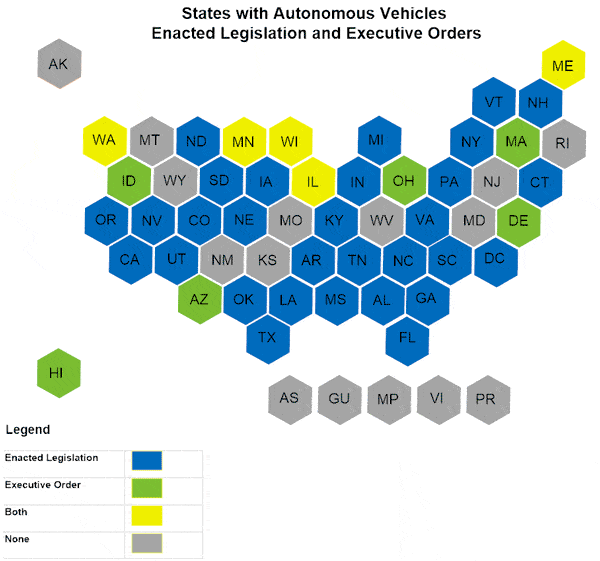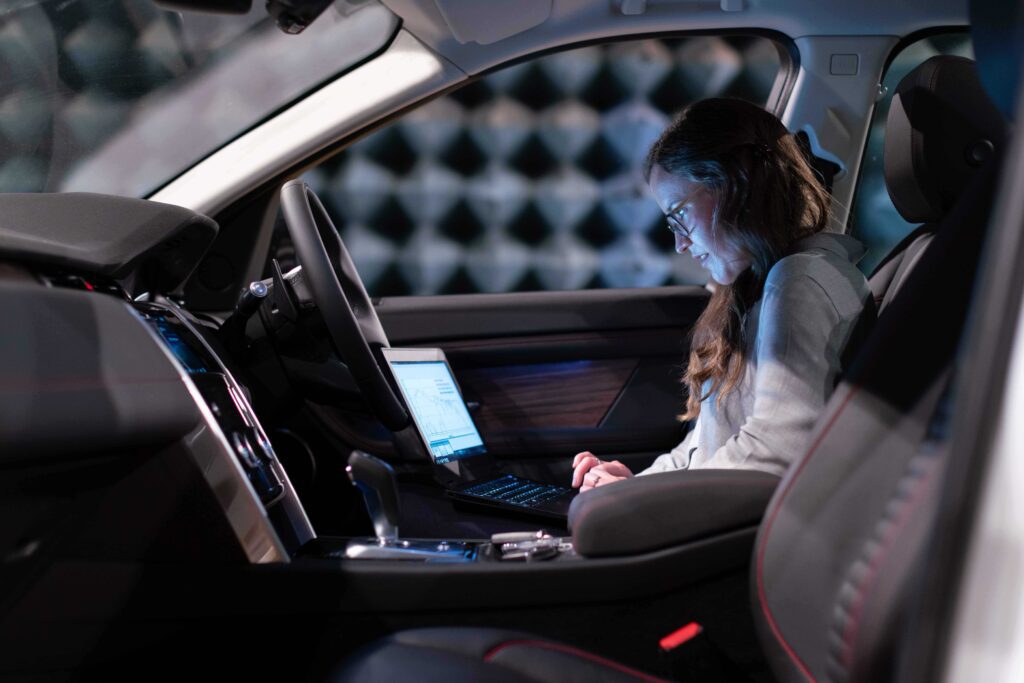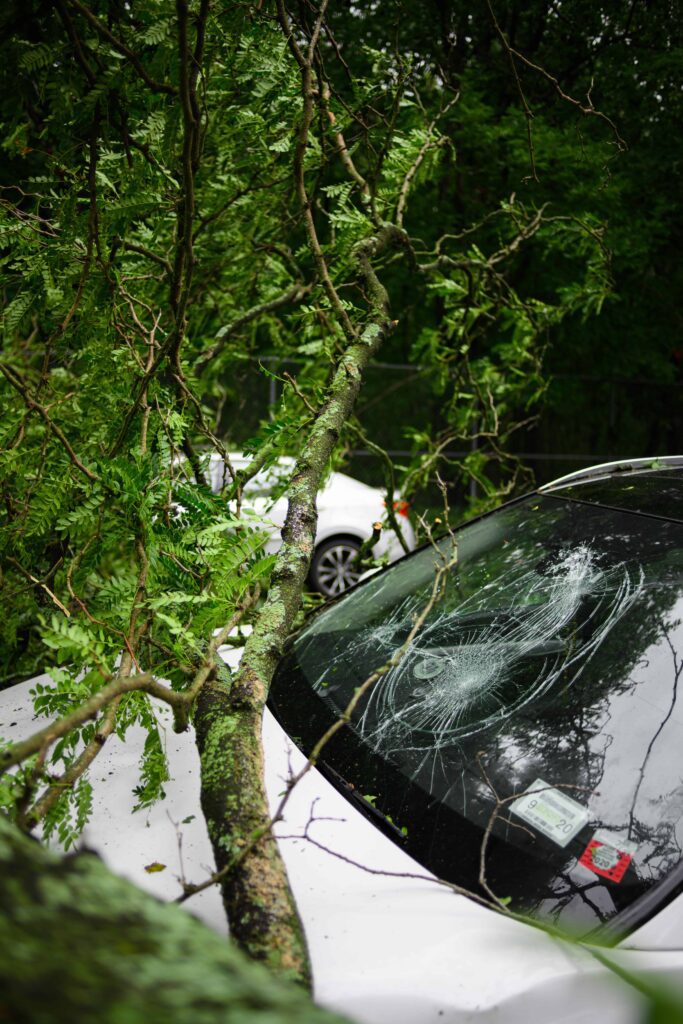The 1980s brought us fantasies of purely autonomous cars. From KITT on Knight Rider to Johnny Cab from Total Recall, these self-driving cars seemed like radical, futuristic concepts. Nowadays, their reality isn’t far off. One big question on everyone’s mind, however, is how will these autonomous vehicles affect accident liability?
Explaining the self-driving levels
Currently, Level 2 self-driving cars (which aren’t fully autonomous), drive our highways. Yet, Level 4 and 5 of autonomous cars stand far ahead on the horizon. We’ll explore the detailed meaning of the different level ratings below.
Technology isn’t the issue with the reality of self-driving cars. Instead, it’s the legal regulations necessary to allow these vehicles to surpass Level 1 and 2 cars that have a long way to go. However, the roads to these regulations are long and winding. The evolution of both the level rating system and the necessary legislation to support its usage on the roads grows at an exponential rate.
What in the world do we mean by Level 1, etc.? A great question. The levels used to rate and regulate autonomous driving originated from the (SAE) Society of Automotive Engineers in 2014.. As technology paved the way for self-driving capabilities never seen before,the SAE recognized the need to differentiate these levels and help enact self-driving legislation.
The Levels of self-driving vehicles run from Level 0- Level 5. Level 0 requires full driver engagement. Level Five cars–which do not yet exist–offer complete vehicle autonomy.
- Level 0: Cars with no driving automation at all. No anti-lock brakes or cruise control. Your grandmother’s 1981 Cadillac would be considered a Level 0 vehicle.
- Level 1: Level 1 Vehicles offer a bit of driver assistance. Level One vehicles stand as the most popular on the road today. Cruise control with driver engagement of gas and brakes is a feature in Level 1 Cars.
- Level 2: Level 2 vehicles allow a driver to take their hands off the wheel when cruise control engages. The car accelerates and brakes without driver involvement. However, the driver can take control when needed, and needs to take over when cruise control is turned off. An “autopilot” feature is available but discouraged. Level 2 vehicles account for most cars touting “self-driving” capabilities in the current market.
- Level 3: Level 3 vehicles allow the car to make circumstantial decisions. Ostensibly, a driver can take their eyes off of the road in a Level 3 car–but there aren’t many available. Available in Japan, the Honda Legend offers Level Three capabilities
- Level 4: Waymo and Tesla command the Level 4 market. These vehicles offer almost full self-driving capabilities. Level 4 vehicles can only drive in contained, defined areas.
- Level 5: KITT. The Batmobile. Level 5s are the final destination for self-driving technology. These cars will allow a driver to take a nap, or sit in the backseat.
In 2018, fifteen states enacted eighteen laws relating to autonomous vehicles and liability. Including Indiana, twenty-nine states in total hold self-driving laws on the books.

In Phoenix, Arizona and recently in San Francisco, California, Waymo taxis–Level 4 self-driving vehicles–have logged over 20 million miles of autonomous driving. The Waymo vehicles are constantly monitored remotely by human engineers.
A study from the Ponemon Institute has shown that full autonomy, or Level 5, is virtually impossible. AI would need to develop to a malleable ability to prepare for any possible scenario. A viral YouTube video shows a Waymo test vehicle running amok in traffic sans the ability to correct course or “unstick” itself.
Thus, there are no fully autonomous self-driving vehicles on the road. However, Level 2 self-driving cars pepper the highways. And research indicates that by 2025, approximately 8 million vehicles with some level of autonomous driving will drive our roads.
Does liability change with these cars? What culpability does the driver bear in accidents?
Self-Driving Cars and Liability
Proponents of self-driving vehicles claim the capabilities will decrease the chance of catastrophic car wrecks in Indianapolis. Human error will disappear. But others believe self-driving cars can increase accidents and other road issues.
AI has not yet reached a level of ability to think through any given scenario. And security capabilities haven’t developed to a point where hackers of car AI systems can be prevented.
Does driver liability decrease with higher levels of self-driving cars?
After some issues with Tesla crashes and hacked Level 2 Jeeps, the debate on liability is still open. Thus far, liability and culpability are entirely circumstantial. And, at times, tests of Level Four cars have resulted in accidents. In 2015, Volvo claimed they would take ownership of any accidents involving future autonomous cars. But current legislation still points to circumstantial liability.
What are the most widely available levels of self-driving cars?
The sturdy, reliable cars of Level 1 still present the most available. Cars manufactured before 2014 often fall into this category. Although Level 2 cars are becoming more available through companies like Tesla, issues still arise and need some ironing out. A 2020 AAA study found Level 2 cars can experience greater issues than Level 1 cars. Auto acceleration can occur without driver input. Braking and steering may randomly have minds of their own.
When will Level 3 and above vehicles become publicly available?
Level 3 vehicles will require rigorous testing and regulations before they become largely available to consumers. The technology is available, and the cars have been built. However, universal legislation and carefully examined regulations must marry the technology. Nonetheless, Mercedes already has a limited supply of Level 3 cars, and BMW isn’t far behind. Level 3 cars for the general public may become a reality sooner than later.
Has legislation kept up with the levels of self-driving cars?
Not by a long shot. Legislatures scramble to keep up with the quickly evolving auto technologies, but they are brave in the attempt. Every year, regulations and laws slowly change. However, these changes mostly occur on a state, and not a federal, level.
Self-driving car technologies offer exciting possibilities. Yet human vehicle operators still may bear liability when occupying these vehicles.









